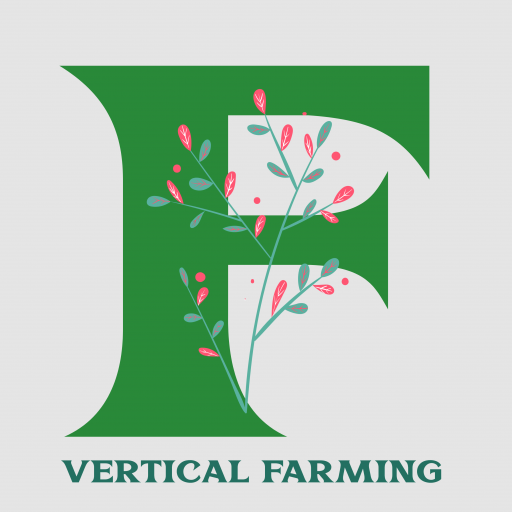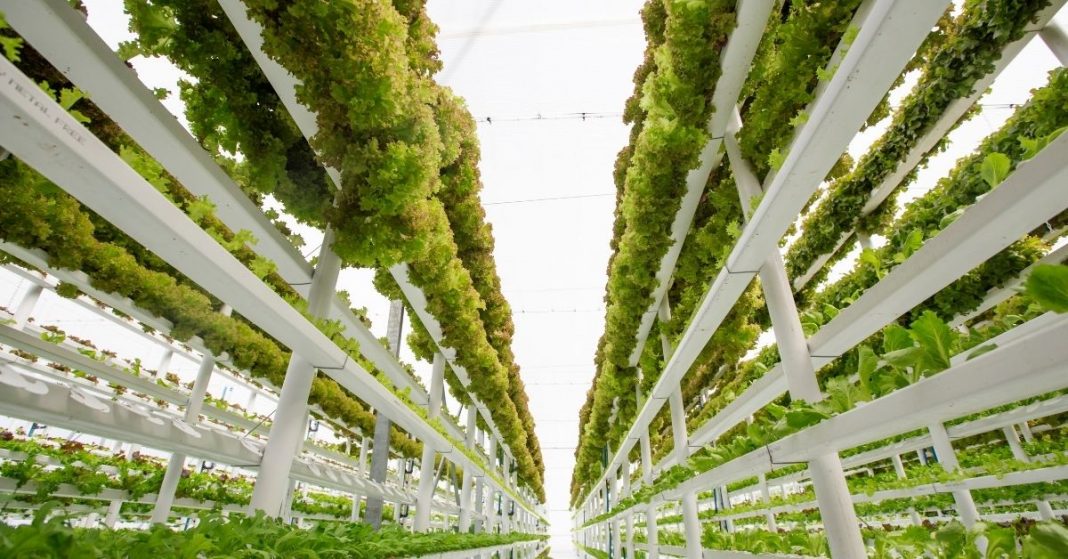What You Should Know About Vertical Farming At Home in 2022.
Making yourself your own meals at home can be among life’s greatest pleasures. However, it’s easy to start to take up a lot of space. It soon took the entire kitchen, and I was forced to develop a solution when I discovered vertical farming.
What do you mean by vertical farming? Vertical farming is the process of growing food vertically, and then stacking it to reduce space. You could call it a tower of plants.
The primary purpose behind this farming method is to yield the most significant amount of crops within the smallest area.
It’s believed as a possible solution to the problem of food insecurity and is frequently used in conjunction with hydroponics.
Are you unsure whether the option of vertical farming at home is the best choice for you? Or perhaps you’d like to know more?
This is a great guide that will walk you through all you must learn about the benefits of vertical farming and everything else that goes with it.
#.What You Should Know About Vertical Farming At Home in 2022.
What is Vertical Farming?
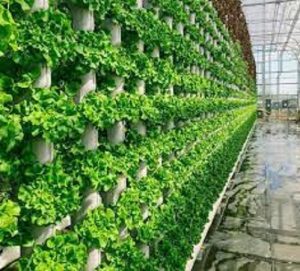
Vertical agriculture is the process of cultivating food items on surfaces that are inclined vertically. Instead of cultivating vegetables and other food items on a single level like on a farm or greenhouse, this technique makes food products by stacking them vertically. This is usually connected to other structures such as an office tower, shipping container, or a repurposed warehouse.
Utilizing the Controlled Environment Agriculture (C.E.A.) technique, this new concept employs indoor farming methods. Artificial control over light, temperature, humidity, and gas creates the ability to produce food and medicine indoors possible. The concept of vertical agriculture is similar to greenhouses, where reflective metals and artificial lighting supplement the natural sunlight. The principal objective of vertical agriculture is to maximize the yield of crops in a small area.
How Vertical Farming Functions

There are four key aspects to understanding how vertical farming functions 1. Physical layout, 2. Lighting, 3. Growing medium, and 4. Sustainability is a critical feature.
First of all, the main objective of vertical farming is to provide more food for each square millimeter. To achieve this goal, the crops are grown by stacking layers within the form of a tower structure. A perfect mix of artificial and natural light is utilized to keep the ideal light level within the space. Technology like rotating beds is utilized to enhance the efficiency of lighting.
In third place, the aeroponic, hydroponic, or aquaponic growth mediums are employed instead of soils. Coconut husks, peat moss, and other non-soil-based mediums are widely used for vertical agriculture. Additionally, vertical farming employs a variety of sustainable features to reduce the energy costs of farming. Actually, the vertical farming method uses 95percent less water.
Vertical Farming Benefits
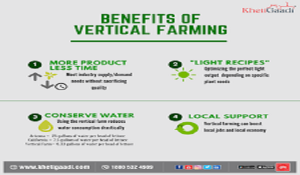
You should consider going vertical from simple issues like saving space and environmental considerations like reducing water use. Additionally, there are many varieties of foods that you can cultivate. There are many other advantages. Let’s look at precisely what benefits you can reap and their reason.
Saves space –Vertical farming’s main benefit is the fact that it conserves space. If you are in an urban area, this is among the primary reasons to begin.
It is possible to use any space in your home; for example, you may have a pile of herbs in your kitchen.
This is also the primary reason behind claims that it can address the global hunger issue.
Saves water – It’s not just a way to reduce space; it also saves massive amounts of water. In fact, it’s been proven to conserve as much as 95% of the water compared to traditional farming practices.
It is partly due to recycled water being used, and any leftover drips go into those plants beneath.
It’s also normal for vertical farms to include hydroponics or aeroponics that aid greatly in the water-saving benefits.
Controlled EnvironmentHaving complete control over the environment lets you give your plants precisely what they require.
Your plants won’t be exposed to normal weather fluctuations, which means you’ll see fewer plants dying.
It’s not difficult to make adjustments to accommodate any problems like a lack of humidity.
Higher Food Output Since it’s space-saving and within a controlled space, it is ideal for producing more plants quickly.
Making the most of space by stacking plants, you’ll be able to make more than you initially believed.
Furthermore, controlling the environment will mean you’ll have your crops ready to be consumed in no time, which brings us to the topic of vertical farming and the worldwide hunger issue.
You may also enjoy: Philodendron vs Pothos – What’s the difference and How Do You Tell?
Vertical Farming at Home Costs
It is a fact that can be wildly different based on your goals. For industrial-scale setups, it is possible to spend millions.
As we’re looking at vertical farming in our backyard, Let’s break it down for this.
Naturally, when you have a setup like this, there are two significant expenses—the cost of the equipment and the expense of keeping it.
Can Vertical Farming Solve World Hunger?
One of the main advantages is the potential to address the issue of world hunger. What exactly is it that it can do to achieve this?
Vertical farming could solve the world’s hunger issues, and there are many reasons to believe this.
One is that it requires smaller areas than traditional farming methods. It means that there may exist ” skyscraper” farms.
Furthermore, because the plants are cultivated in a controlled and controlled environment, there’s less likelihood of them suffering from illness or unpredictable weather.
What can you produce with Vertical Farming?

There are a lot of options when it comes to cultivating plants vertically. You can plant anything from vegetables to succulents, and there is no limitation. Some plants that perform exceptionally well are those which thrive in humid environments like spider plants. Spider plants since it’s much more suited to creating the conditions for a humid one in a vertical garden.
The main goal with vertical farms is generally to cultivate edible food. It provides you with the space and the environment to grow crops that are generally suitable for indoors, and outdoors. An excellent example is broccoli. It’s known to be a challenge to plant indoors because they are fans of sunlight. However, that’s not the case for the vertical indoor farm setup. The indoor lighting that higher high-end setups offer is more than the minimum broccolli requirements.
Here are some excellent examples of the kinds of fruits and vegetables that you can grow If you are vertically farming at home:
How does Vertical Farming at Home Work?
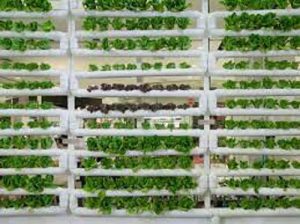
There are a variety of aspects that make a vertical farm function. Starting with the basics, it must have an element of tiredness to the farm, or the farm isn’t “vertical agriculture”. That’s where the idea of vertical farming comes into play. The concept behind this method demands that there be layers of tiered structure to reduce space. Building up instead of across allows you to reduce the size of your house and create more land to plant plants on.
Lighting
That’s the basic outline. Now let’s go deep into the specifics of how it all operates. Each tier is equipped with an array of lights to mimic daylight. They are typically on an alarm system that helps mimic the natural circadian rhythm. One common mistake people make is to believe is that it’s okay to provide constant light to your plants. This can result in plants that quickly die if there are no long periods of darkness.
Natural Light
Vertical farms are designed to let sunlight reach your plants, meaning they’re not entirely dependent on artificial lighting to grow.
Watering
The next step is the watering system. This comes in various types based on the amount you’ve invested in the equipment.
Aquaponics
At the top of the scale, you’ll see an aquaponic system. This is where fish are used to create a mini natural ecosystem—the fish in the water help to fertilize the water, which is beneficial for plants’ well-being. In return, plants purify the water for fish, creating a healthy ecosystem.
Hydroponics
Hydroponics is the preferred method of vertical farming at home. It’s typically less expensive than the other options and is much simpler to set up for those who are new. The plants are usually placed in a healthy reservoir of water which is circulated to ensure that it stays healthy. Growing this up is relatively simple and is perfect for novices.
Manual Watering
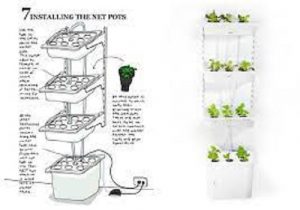
Then, the standard method of watering. This is a method that’s used with the least expensive of plants, but that doesn’t mean that it’s poor. You can use the watering container and then water the plants on top. This excess moisture will flow down to provide the lower plants with food. However, you should ensure that they get enough water at low levels.
Vertical Agriculture and the Environment
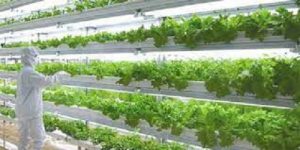
There’s plenty of optimism about vertical farming and its effect on our environment. One of the biggest problems currently facing us is how fast we’re losing land to agriculture because of climate change. We don’t have a significant amount of time to find a solution at the rate we’re moving. This is where vertical farming could be able to save us.
What can vertical farming do to help the environment? Vertical farming benefits the environment in a variety of ways. It conserves around 249 liters of water needed to cultivate a plant like lettuce, compared to when it’s cultivated in open fields. Additionally, it permits us to maximize our crop with a smaller land space than conventional methods.
You now realize that it can save a massive volume of water. How does it save this much water? Vertical farming conserves water because it reuses a large portion of the water that is used during the growing process. It’s less water lost through evaporation than in traditional methods of cultivation. Additionally, some vertical farms spray rich, nutrient-dense clouds of water over the roots of the plants. This helps to save vast amounts of water.
Vertical Farming in the United States
Vertical farming is increasing within the U.S., at a CAGR of over 24% throughout 2018-2024, which is predicted to grow to $3 billion annually. 8 By comparison, the overall U.S. fruit and vegetable industry was worth more than $104.7 billion in the year 2016. 9 According to one report, “Shoppers can now get their produce indoors from more than 23 huge vertical farms within more than 20 grocery chains across nearly every major city in the United States.”
The sector is still heavily leveraged. This has raised concerns regarding its sustainability, especially since survival is contingent on expansion and growth is capital-intensive. In the words of the same report, “While industry leaders say that expanding is the best chance to be profitable in this field, However, many vertical farms have faced difficulties as they started planning to expand their production facilities.”
Conclusion
Vertical farming is relatively new. It is still a challenge for companies to produce large-scale crops and be able to afford them to satisfy the increasing demand for food. The success of farms such as Aero Farms will determine how vital a role vertical farming can play in the coming years to tackle the issue of a growing demand for food.
It is worth noting. However, that technology designed for vertical farms is being used by other sectors within the inside farming market, including greenhouses that use sunlight, but require more land and long ways to get to market.
F.A.Q.
There are many frequently asked questions we are from people who are interested in vertical farms. See whether your question is addressed here. If not, post us a message below, and we’ll try our best to assist you.
Are the Home Vertical Farms profitable?
A home-based vertical farm could be profitable. It is possible to sell your crops to neighbors, your family, or friends. They’ll appreciate the fresh, organic flavor of your produce. When you’re trying to create profits, you’ll need to be aware of the cost of everything involved.
Can It Be Set-up In A Few Minutes? A Vertical Farm From Your Home?
Setting up a vertical farm at home could not be simpler. Of course, it’s contingent on the type of farm you opt for, but the most basic installations can be set up and in place within 20 minutes.
